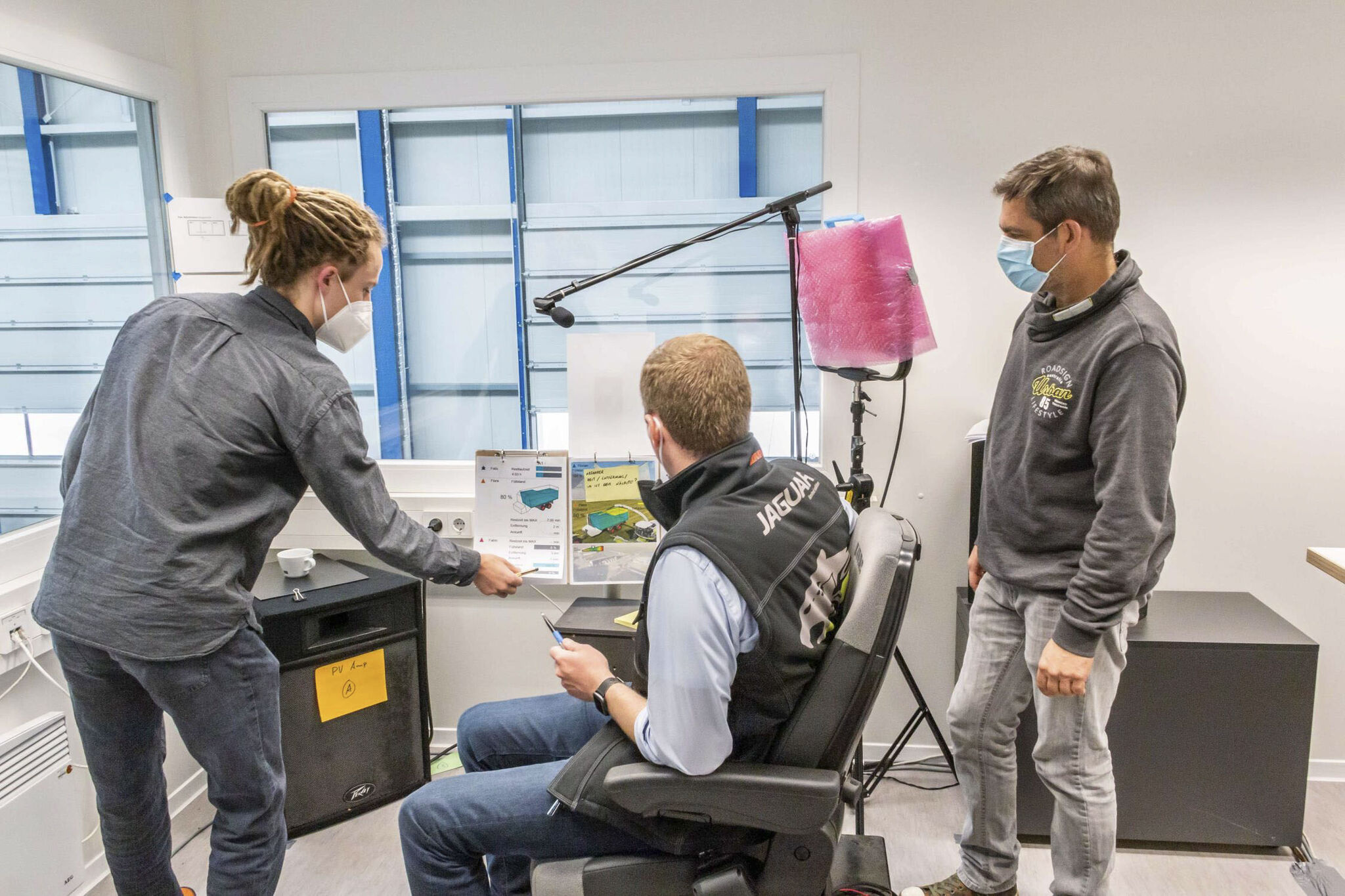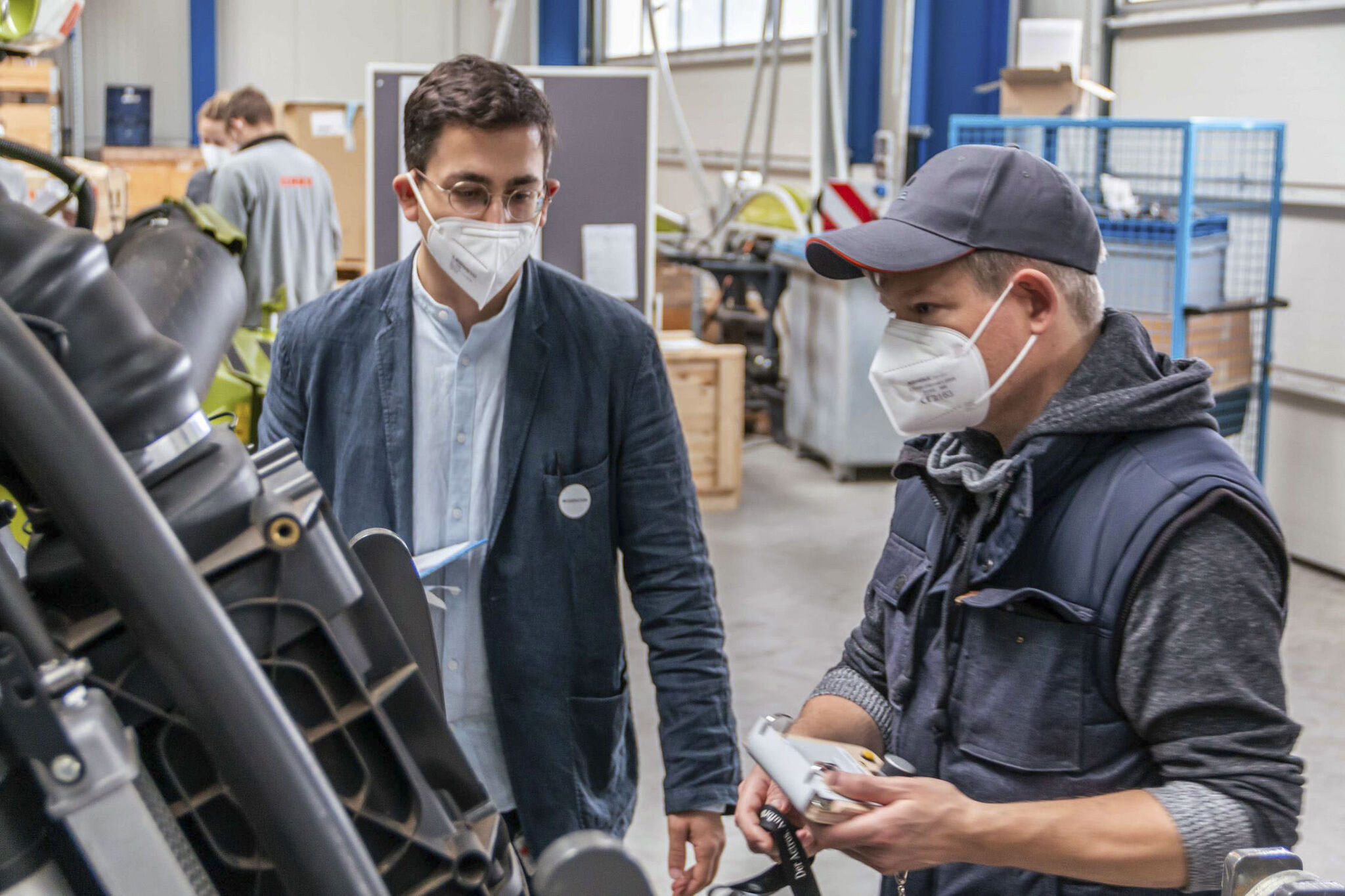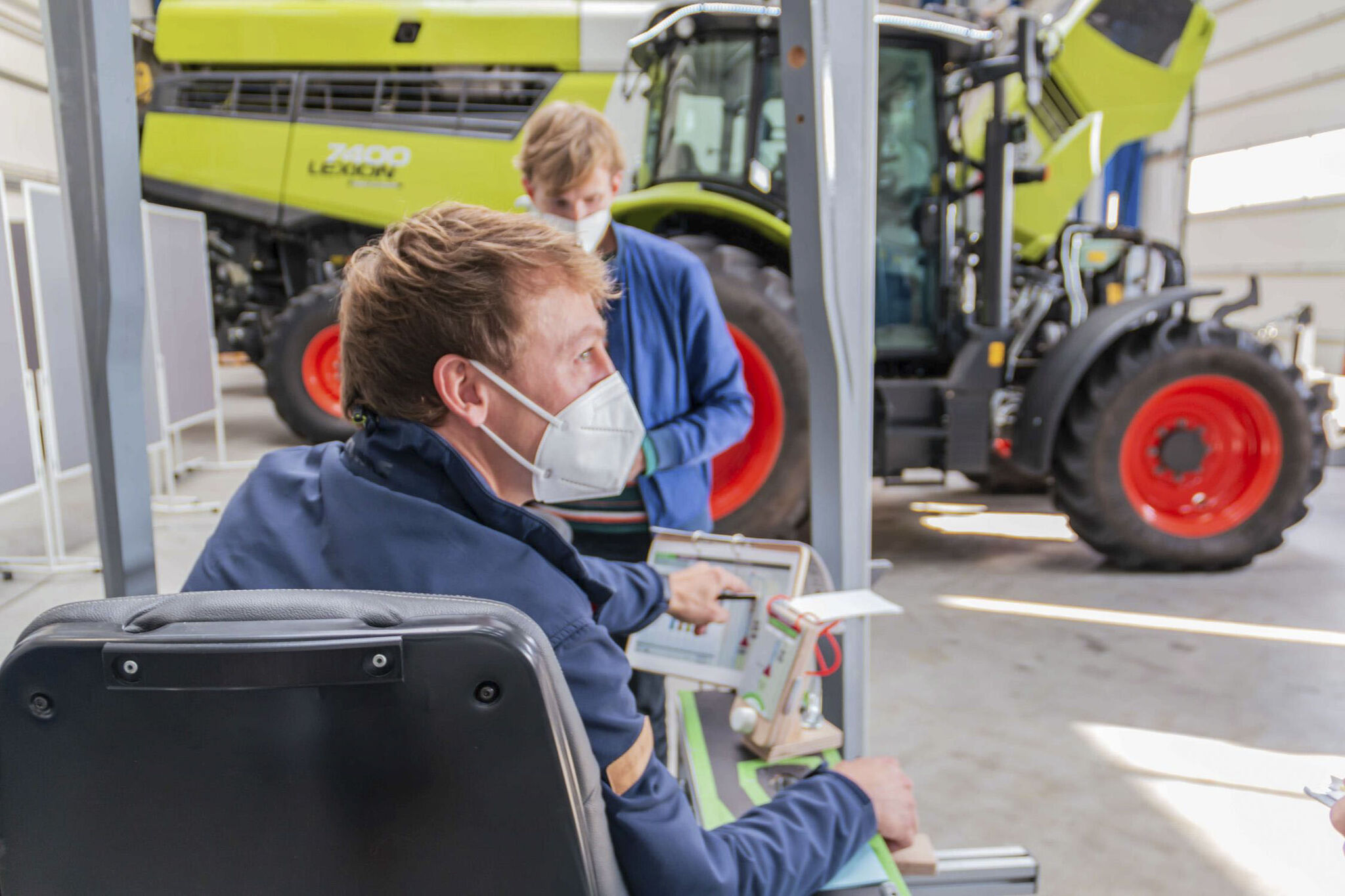
HMI Vision for Smart Farming
How will fields be harvested together with intelligent machines in the future?
Agriculture human machine interaction
change of work connected machines
Vision future foresight
Role / Responsibility
Strategic Designer (The Deep Bench GmbH): Concept, Facilitation, Prototyping
Product / Output
HMI Vision, Scenarios, Personas, Storyboards
Year & Duration
2021 – 2022, +1 year
Client / Partner
Claas, TU Dresden
challenge
How might we support drivers, farm employees and managers do their job in the most efficient and effective way, and collaborate in real time with all the data and insights at their fingertips to make their job more meaningful?
outcome
Connected experience for the harvest team: HMI solutions aim to empower the drivers to do their job in the most efficient way and give them a feeling of a interconnected team.
context
Claas is a leading manufacturer of agricultural machinery and a major player in combine harvesters. To hold this position, Claas must continuously develop its machines in line with the needs of users and utilise the latest technology.
insights
Idle times and intransparency: Harvesting is a complex interplay of people and machines. Further, it is a time-critical task and drivers aim for highest efficiency. At the same time communication channels lack transparency and process steps do not interlock smoothly.
impact
One vision bridging silos
Our role was to facilitate the innovation process while delivering project results. Working across departments and companies required a lot of alignment.
Whenever phases of discussion ocurred we guided the team to create concrete assets like user journeys or scenario storyboards. This helped the team to align and understand each other.
The work resulted in a new vision of connected farming and enabled Claas to move forward to implement this vision.
PROJECT JOURNEY
From Insights to a Vision for 2030
In a nutshell
We analyzed the human-machine interaction of combine harvesters and other agricultural machinery. We co-created solutions for intelligent and digital farming for 2030 and validated them with expert users.
Phases/Artefacts
1. User insights
2. Scenarios
3. User Journeys
4. Ideas
5. Concepts
6. Prototypes & User Validation
7. Vision map
scenarios & user journeys
I joined the project after the research phase. We synthesized the findings and created scenarios for each machinery category. With each scenario we created a user journey which highlights the important differences compared to the current workflows.
Ideation workshop
The Corona Pandemy forced the team to have remote workshops. Often I facilitated those workshops.
Looking at future scenarios and user journeys we identified opportunity areas and gathered How-Might-We-Questions. Along these questions we ideated solutions and enriched the scenarios with concrete aspects.
Concept workshop
In the previous phases we gathered lots of ideas, also on different levels. We asked the whole team to pick ideas they find important from their individual professional perspective and formed concept teams. Each team then worked out a concept for one specific machinery.
prototyping & validation: User Testing
For each concept we defined areas and sequences to prototype.
Over 3 days we tested and discussed our concepts with 19 expert users in 38 sessions. We used paper prototypes in combination with the real machinery in semi-structured interviews and brought six concepts to the next level.

user testing ©The Deep Bench, Claas, TU Dresden

user testing ©The Deep Bench, Claas, TU Dresden
COncept story boards
With the feedback and the findings from the user testing we created tangible concept story boards which highlighted the key aspects of each concept.
Vision map
We needed to bring everything together. A colleague of mine came up with the idea to create a landscape map of our vision. In this map we located all the different workflows and machinery.
At that moment, all the ideas and concepts came together to become one big vision.
My takeaway
Stakeholder Management & Visual Artefacts
Large teams across different departments and even organisations demand an advanced stakeholder management. It is a constant effort to re-focus on the main thing.
My personal highlight was when one of my colleagues presented a system map to the stakeholders. It was basically a map that visually summarised all our concepts into one ecosystem. This created a strong sense of community within the team.
You are curious? Drop me a line
Contact
2017 – 2024, © Benedikt Bandtlow. Rights of images and concept of commercial works remain with the respective clients.
